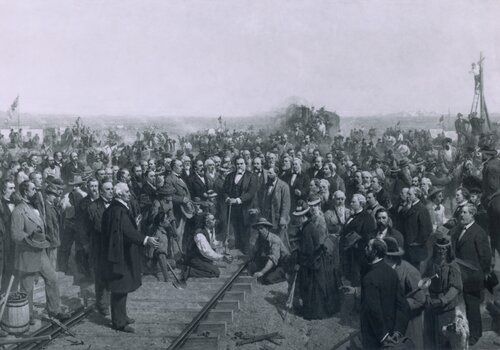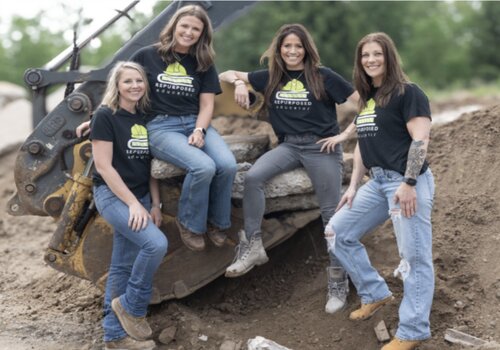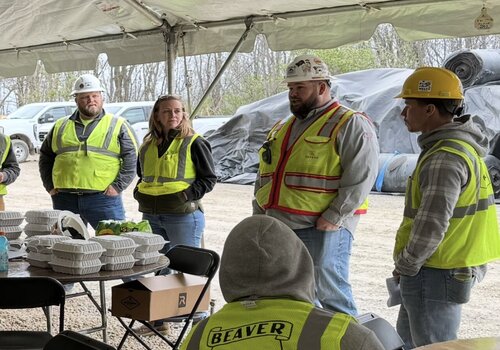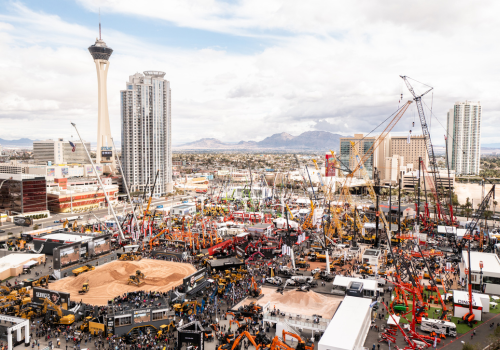What are some of the most challenging projects in US construction history? Two industry experts share their favorites and provide us with a behind-the-scenes look.
Paul Giroux is a professor of engineering practice at Purdue University, after working for Kiewit Corporation for nearly 45 years in civil engineering and management roles. Several mega-projects that Giroux oversaw at Kiewit include Fort McHenry Tunnel in Baltimore, the new Zakim/Bunker Hill Bridge, the San Francisco Oakland Bay Bridge East Span and the Folsom Dam Spillway.
Here is what Paul had to say about some of the most challenging projects in construction history:
TRANSCONTINENTAL RAILROAD – 1863 TO 1869
The Transcontinental Railroad transformed the United States and paved the way for other large rail projects around the world. If you think about a railroad from Omaha to Sacramento, 1,800 miles roughly in length over some of the most rugged terrain – the Wasatch Range in Utah, and the Sierra Nevada range in California and western Nevada – many people concluded this was an impossibility to build a railroad through that type of terrain.
Then there were the logistical challenges of getting the rail, the rolling stock, the more manufactured goods to the project. On the east side, an ocean-going vessel had to go from New Orleans up the rivers to Omaha. Even more challenging was all that rolling stock and materials from the East Coast had to get to California – first to San Francisco and then be transported up to Sacramento. The logistics of this were just mind-boggling.
The civil engineering profession was really in its infancy at the start of the transcontinental railroad in 1863 – there was less than 600 civil engineers in the entire United States. With this project, you're also looking at the convergence of the best of equipment technology and the best in engineering knowledge at the time.
There was no disconnect between these great projects and then the evolution of equipment technology. In the mid-19th century, the Transcontinental Railroad was leveraging some equipment technology, but it was still very much a manual process. They not only had to take the best equipment of the day, but then in many cases they also had to develop new equipment to take on all these challenges. By the time you get to the early 20th century, now we're into the steam age of construction equipment.
There's also an element of true trail blazers – not only the leaders of the project at the highest level, but also the craftspeople. Their creativity and resourcefulness, and the courage they had to have to get through these challenging projects and live in very harsh conditions.
The human story is just remarkable. There were probably over 10,000 workers between the Union Pacific and the Central Pacific.
You had teams of surveyors out there, years in advance, looking to find the most efficient route for the railroads because the locomotives were limited to only a little over 2% maximum grade. Then they still had to find a way to weave through the Sierra Nevada range, which is really rugged. You have to really admire the skill and courage of the survey crews that paved a path to that victory.
When you get to the peak of the Sierra Range, there is Tunnel No. 6 – the highest point for the Union Pacific at 7,000 feet above sea level. There were times when the tunnel was under construction and there would be blizzards that literally lasted a week, so it was really challenging for the workers to get through those really tough conditions. They had to face the cold, avalanches and other hazards as they were building those tunnels – seven in a just a few miles.
The brunt of the manual work in the tunnels was done by Chinese labor crews. During this work they proved themselves to be exceptional in character and work ethic. Much of the work force for the Central Pacific and the Union Pacific were immigrants.
The Transcontinental Railroad was a seminal chapter in the history of civil and construction engineering. Its successful completion in May of 1869 opened the western United States and inspired railroad builders around the world.
PANAMA CANAL – 1904 TO 1914
The Panama Canal was a project without precedent in the world – 350 million cubic yards of excavation. The French started the project in 1880, yet they abandoned their effort after losing 25,000 workers primarily to yellow fever and malaria and losing over $300,000,000 in the jungles of Panama.
The American effort to build the Panama Canal began in 1904. The first American chief engineer, John Finley Wallace, unfortunately did not put enough emphasis on project logistics and worker living conditions to prevent yellow fever and malaria. Wallace was also failing during his tenure at Panama. It wasn't until John Frank Stevens, the second chief engineer who arrived in Panama in late 1905, who put a major effort on getting everything organized.
With the assistance of Chief Medical Officer Colonel Vargas, yellow fever, malaria and fear in the workforce were eradicated. Stevens is widely regarded as the genius builder who developed efficient railroad-based excavation and spoils disposal methods.
The United States showcased some of the best equipment in the world at Panama. America mobilized 101 steam-powered shovels, over 700 rock drills, and a fleet of steam-powered dredges for underwater excavation. They also had to leverage the latest blasting technology.
Ultimately under the leadership of the third chief engineer, George Washington Goethals, by 1914 the Americans had excavated and dredged about 250,000,000 cubic yards of soil and rock.
The Panama Canal is just a great story of the builders taking the best equipment that the equipment industry had to offer. And then, through evaluation of that equipment, developing efficient means and methods to take on a challenge without precedent -- that was really a remarkable, and a timeless lesson for modern builders.
Bob Bowen is founder of Bowen Engineering headquartered in Indianapolis, and sponsor of the Bowen Prize for the most outstanding projects in the world. Bowen is also a professor at Purdue University and the author of the new book, “Culture: The Secret Weapon.”
Here is what Bob had to say about some of the most challenging projects in construction history:
HOOVER DAM – 1931 TO 1936
I'm partial to the Hoover Dam – I think that's one of the great projects of all time.
First, they had to bypass the Colorado River through the banks. They had to build tunnels through the banks for the water could go around while they were building the dam.
Bechtel was the prime contractor on the project and they're still in business. They're the largest contractor in the world today, and they got their start at the Hoover Dam. Frank Crowe, the project’s superintendent, is my hero.
Sadly, quite a few people died on the job. It was tough work. They drove anchors in stone walls that were 80, 90 or 100 feet in the air. It was a dangerous business, but the dam ultimately provided water for the Southwest and paved the way for other early really big jobs.
BROOKLYN BRIDGE – 1870 TO 1883
The Brooklyn Bridge, which just celebrated its 125th anniversary, is certainly one of the great projects of the United States. It wasn't the first suspension bridge, but it was certainly the longest one at the time – almost a mile.
They had to build those piers underwater – under pressure – so they had to pressurize themselves to go into the water to build the piers up from inside out.
Then the chief engineer, Washington Roebling, became sick with the bends couldn't finish the job. So his wife, Emily Warren Roebling, also an engineer, finished it. They had an apartment right next to the bridge and he could watch the construction from their apartment. His wife was the manager and she took his instructions and built the bridge.
Both Roeblings are in the Civil Engineering Hall of Fame.
Photo credit: SHUTTERSTOCK/EVERETT COLLECTION












